ISSN ONLINE(2278-8875) PRINT (2320-3765)
ISSN ONLINE(2278-8875) PRINT (2320-3765)
| Anuradha S Deshpande Associate Professor, Department of Electrical Engineering, Faculty of Technology & Engineering, Maharaja Sayajirao University of Baroda, Vadodara-390001, Gujarat, India |
| Related article at Pubmed, Scholar Google |
Visit for more related articles at International Journal of Advanced Research in Electrical, Electronics and Instrumentation Engineering
Modern technology practices green technology concept in respect of power generation and supply. Importance of utilization of non-conventional methods of generation & battery (Fuel Cell) as power plant are need of the hour. Paper has made an attempt for utility & SOFC integration using DC/AC conversion technology. Use of solid oxide fuel cell is demonstrated for supplying utility modeled as Infinite Bus through DC/AC conversion. Mat lab simulation for SOFC & utility interface was done to establish parameters of SOFC and Infinite bus with respect to dc voltage & current, Active & reactive power of fuel cell & infinite bus, terminal voltage of fuel cell & Infinite bus, three phase voltage of FC & IB and three phase current of IB. Simulation results suggest 1pu Vt at FC & IB & adequate power at utility. A comparative with SOFC replacing battery was also done. Batteries resembling power plant size were integrated with IB as utility. Mat lab simulation results were identical and at times better (Vt, Vabc, Iabc), in direct comparison with SOFC. Thus proposed work has successfully established utility interface with SOFC & batteries for isolated consumers or isolated installations. Application of SOFC and utility interface can be utilized as distributed generation source in a micro grid for isolated operation during islanding.
Keywords |
| Solid oxide fuel cell (SOFC), Battery, Utility, Inverter, Infinite Bus. |
INTRODUCTION |
| Sustainable development and green technologies are making clean atmosphere concept due to zero emission levels. Modern world stresses use of pollution free sources of generation (Non Conventional Sources like Wind, solar etc). Research in the area of power generation through fuel cells and battery power plant has increased many times. Concept of distributed generation has also percolated up to bottom of the smallest power system. Micro grid operation during islanding condition has provided option of emergency operation, of the power system together with normal operation of the power system. |
| Solid oxide fuel cell technology is a concept which is gaining wide importance due to its application as Generating power plant or as stationary power station. The solid oxide fuel cell technology employs a variety of oxide ion conducting ceramic materials as the electrolytes. Zirconium is the most common and widely accepted electrolyte material for the high temperature SOFC. Due to high operating temperature, SOFC bears the advantage of faster reaction kinetics, fuel flexibility and does not require expensive catalyst like the low temperature fuel cells. It can consume CO as fuel but it does not require recycling of CO2 from anode to cathode leading to further simplification of the system. High temperature operation and tolerance to impure fuel streams make SOFC especially attractive when combined with coal gasification plant. SOFC can be fabricated in to a variety of self supporting shapes and configurations that are not feasible with cells employing liquid electrolytes. Operating Temp oC – 500-1000, Fuel/Oxidant –Natural Gas, Bio gas, H2/O2 (Air), Realized Power – 100-250KW, Electrolytic charge carrier – O2- , Application – Generator, Stationary Power Source. |
| World scenario about fuel cell market approach is to achieve durability of the system for 3000 hour to 5000 hour and to lower the cost below $100/KW. Above concept can be materialized by integrating utility with SOFC. DC/AC converters or inverters are basically of VSI and CSI type.VSI uses a diode rectifier and a capacitive filter at the front end and does not have inherent regenerative capability. Both sinusoidal PWM and hysteresis band current controlled methods are widely used to regulate the voltage magnitude and harmonic ripple at the output. Several methods of PWM control including the latest space vector modulation (SVM) technique and multi level inverters have been introduced with GTO’s, IGBT’s, IGCT’s, or IGET’s in a doubly sided (dual) PWM VSI fed rectifier inverter high power drive for bi directional power flow and sinusoidal current both at the input and the output together with unity supply power factor. |
| Research in the area of SOFC is revealing development in recent years. C. J. Hatziadoniu [3] suggest study suitable for planning studies, considering 2 major loops for voltage and power control with dynamic performance of the exciter utility and its sensitivity to some planning variables such as generation mix and controller rate of response are investigated. Fuel cell and gas turbine plants are considered in the study of distributed generation, for a utility. Padulles [5] has developed general characteristics of the model, plant structure applicable to SOFC technology, in terms of determination of safe operating area by V-I and P-I plots. Work has considered simulation aspects. Sedghisigarchi [6] developed dynamic response of SOFC for fast and slow perturbations, i.e., model is suitable for both small signal and transient stability studies. Simulation in power analysis tool box (PAT), a MAT LAB based tool box was done which shows that for very fast load variations, temperature and species dynamic can be ignored. Zhu [7] has modeling of micro turbine and SOFC system, in standalone mode. Evaluations of these standalone models show that they are reasonable and suitable for slow dynamic simulations. A distribution system with practical control strategies is developed for analysis of load following service provided by turbines and fuel cell. |
| Proposed work has made an attempt to project/establish SOFC suitability over battery system. Also application of SOFC for standalone application for micro grid in islanding condition and for distributed generation is proposed. Integration of SOFC with grid suggests standalone application. Literature survey has no standalone application development as DG or micro grid. Wave forms of battery and SOFC, establish suitability of SOFC which is not done in earlier work. No parameter comparison is done. Thus paper has contributed to the research in area of SOFC as a stationary power source. |
II.MODELLING OF COMPONENTS |
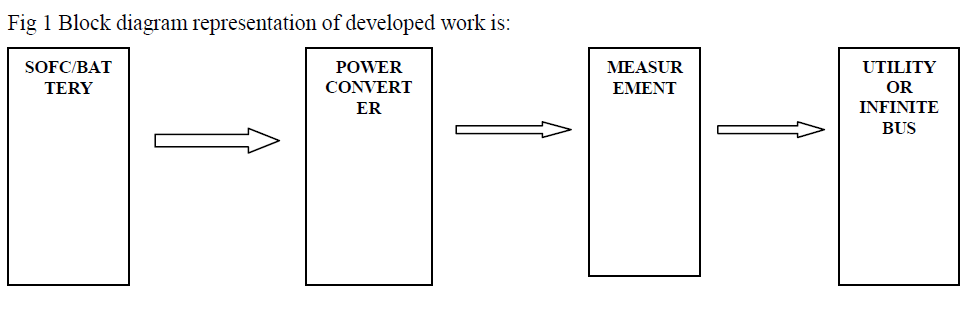 |
| SOFC and energy battery are of growing interest for distributed and/or renewable resource generation and energy storage. Also they have interesting non-linear DAE models. |
| A. Modeling of SOFC |
| Fuel cells are a promising technology for producing electrical energy. The main issues that complicate the design of efficient and robust fuel cells are related to electrode heating and corrosion. However fuel cells are expected to play an important role in distributed generation. |
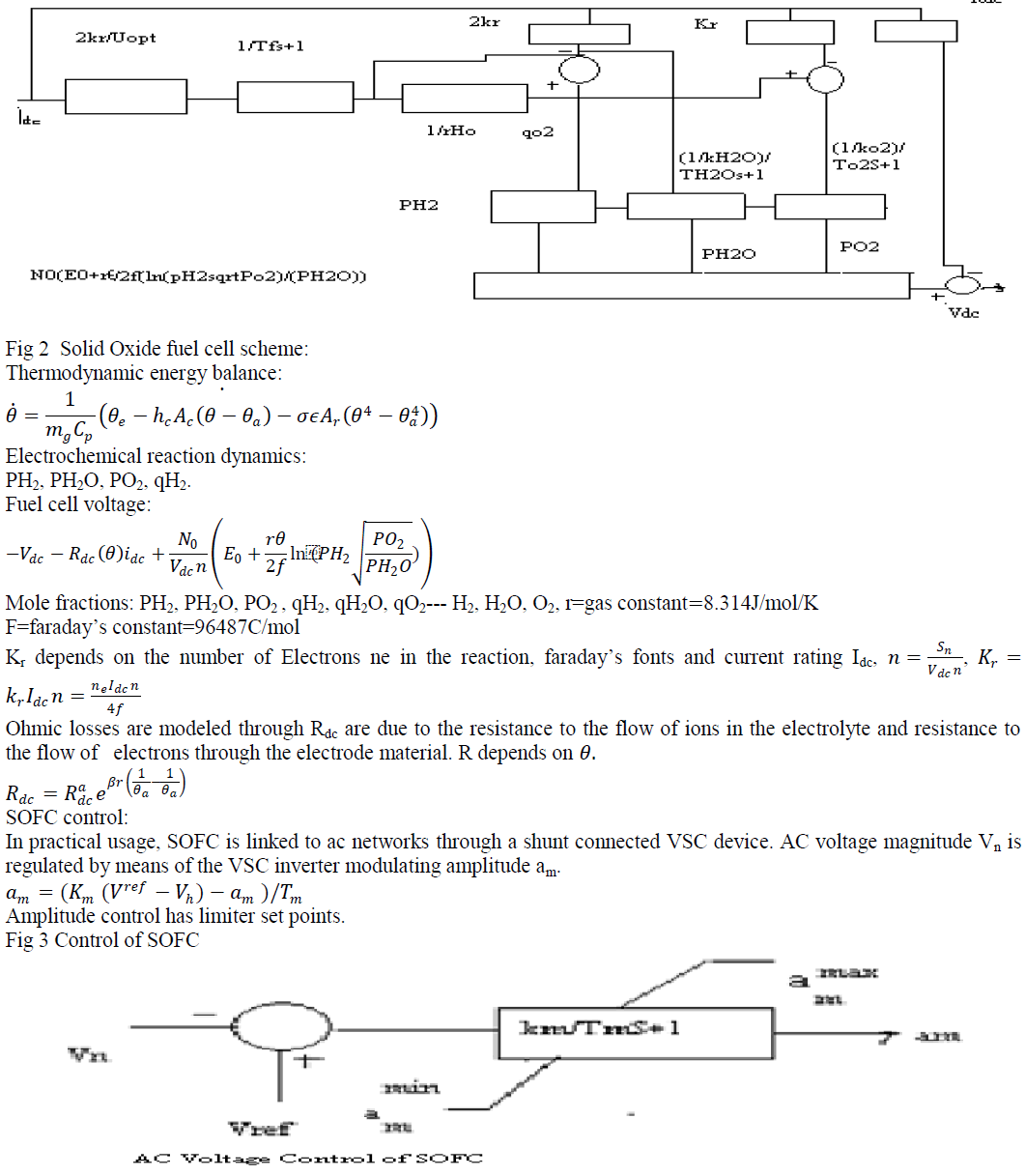 |
| Fuel cell dc current set point ïÿýïÿýïÿýïÿýïÿýïÿý ïÿýïÿýïÿýïÿýïÿýïÿý is defined based on power reference Pref. ïÿýïÿýïÿýïÿýïÿýïÿý ïÿýïÿýïÿýïÿýïÿýïÿý set point is limited by dynamic limits proportional to the hydrogen flow: |
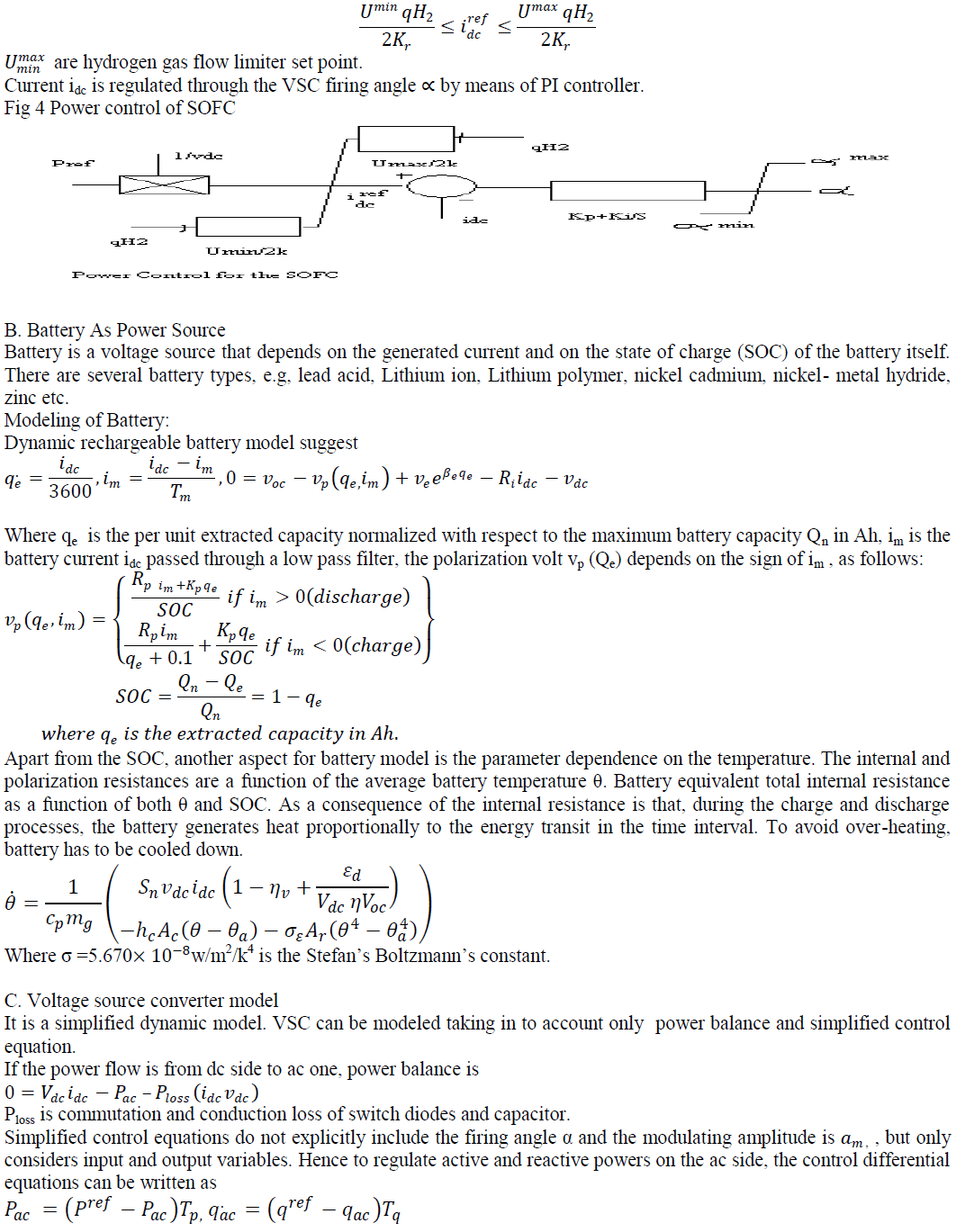 |
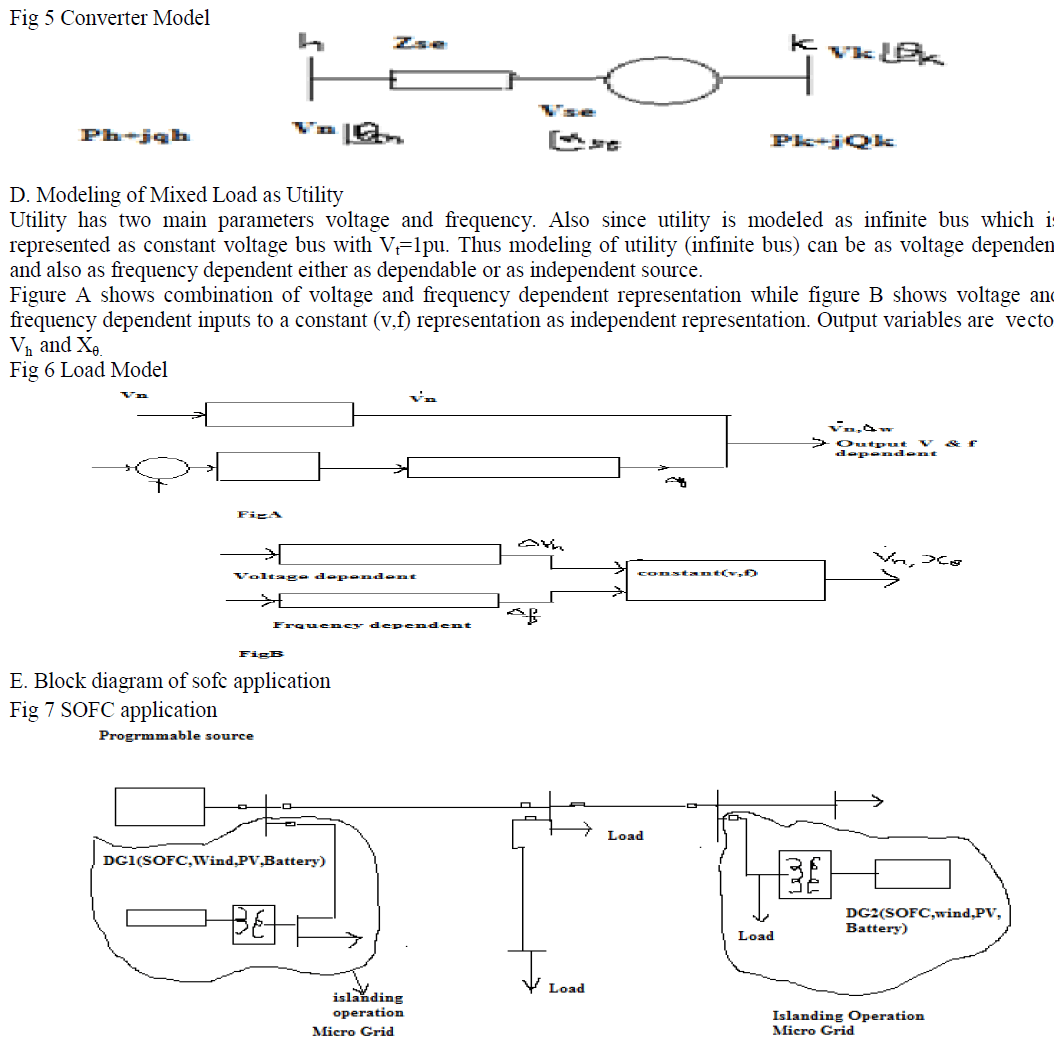 |
| SOFC as power plant to operate in micro grid in islanding condition, operated through circuit breaker. So SOFC in isolated stand alone operation.(variable voltage and frequency) |
| SOFC as distributed generation for grid operation in stand alone operation. (Concept of Micro Grid). |
III. SIMULATION CIRCUIT |
| A simulation circuit for SOFC interfacing with utility modeled as infinite bus is developed and simulated in Mat lab 7 environment. A comparative is established with battery as power source device interfacing with utility. |
| Model of a solid oxide fuel cell (SOFC) which can be utilized in Sim Power System. |
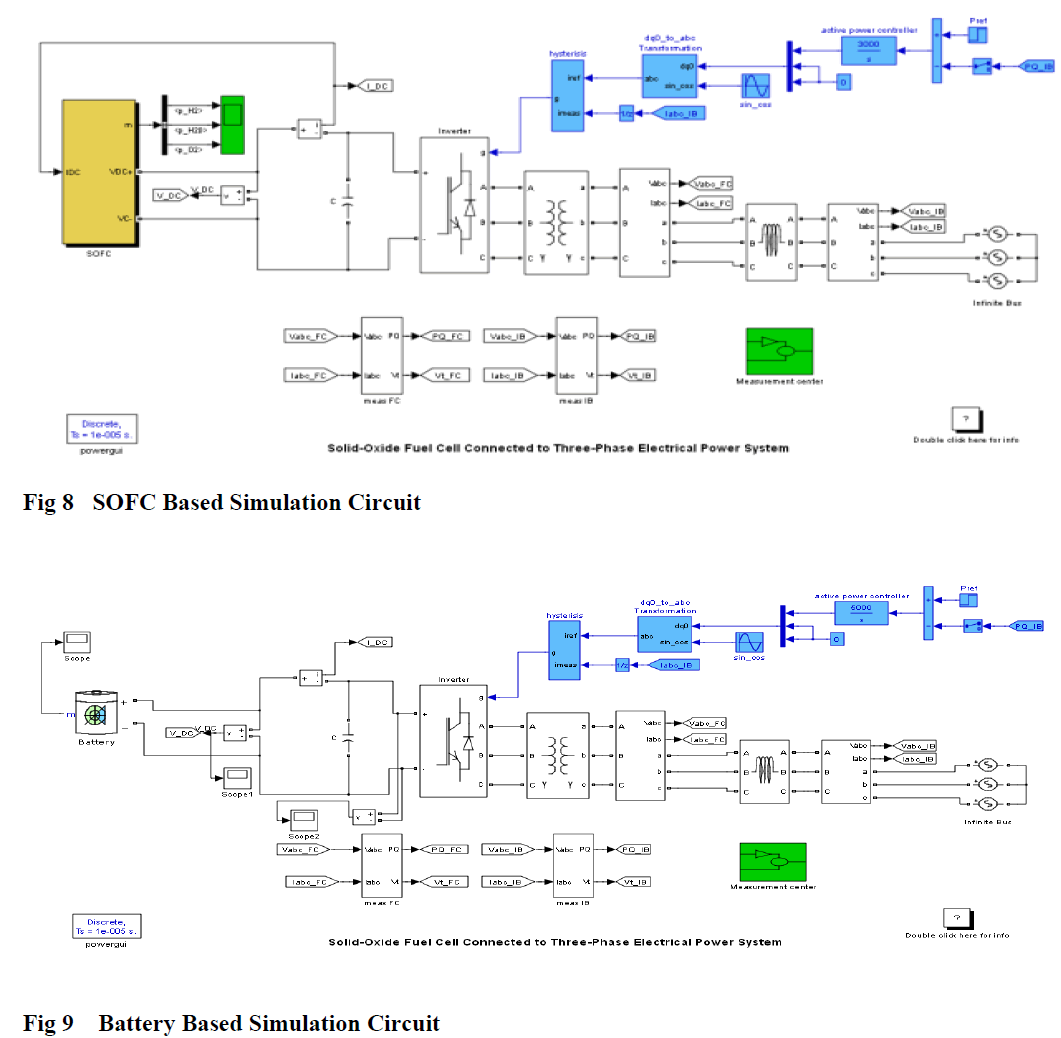 |
F. Circuit Description: |
| The system consists of a SOFC which is connected to a 3φ Infinite Bus through an IGBT inverter. The inverter uses hysteresis switching and controls active power by manipulation of direct axis current while holding reactive power at 0VAr. The measurement blocks are rated at 50KW. Therefore, an active power reference of 1pu=50Kw. |
Simulation: |
| At t=0s, an active power reference (Pref) of 0.3pu is commanded. Observe that the reference is captured within 0.2s. |
| At t=0.4s,Pref =1pu is commanded. Again the ref is captured within 0.2s. |
| Observations of the H2, H2O and O2 pressure shows that the fuel cell does not reach a new equilibrium for the simulation of duration 1sec.Extended simulation periods are required to observe the dynamics of chemical reaction. |
| Assumptions: |
| 1) Fuel cell gases are ideal. |
| 2) Only one pressure is defined in the interior of the electrodes. |
| 3) The fuel cell temperature is invariant. |
| 4) Nernst’s equation applies. |
| G. Block Parameters of Simulation Circuit: |
| 1) SOFC |
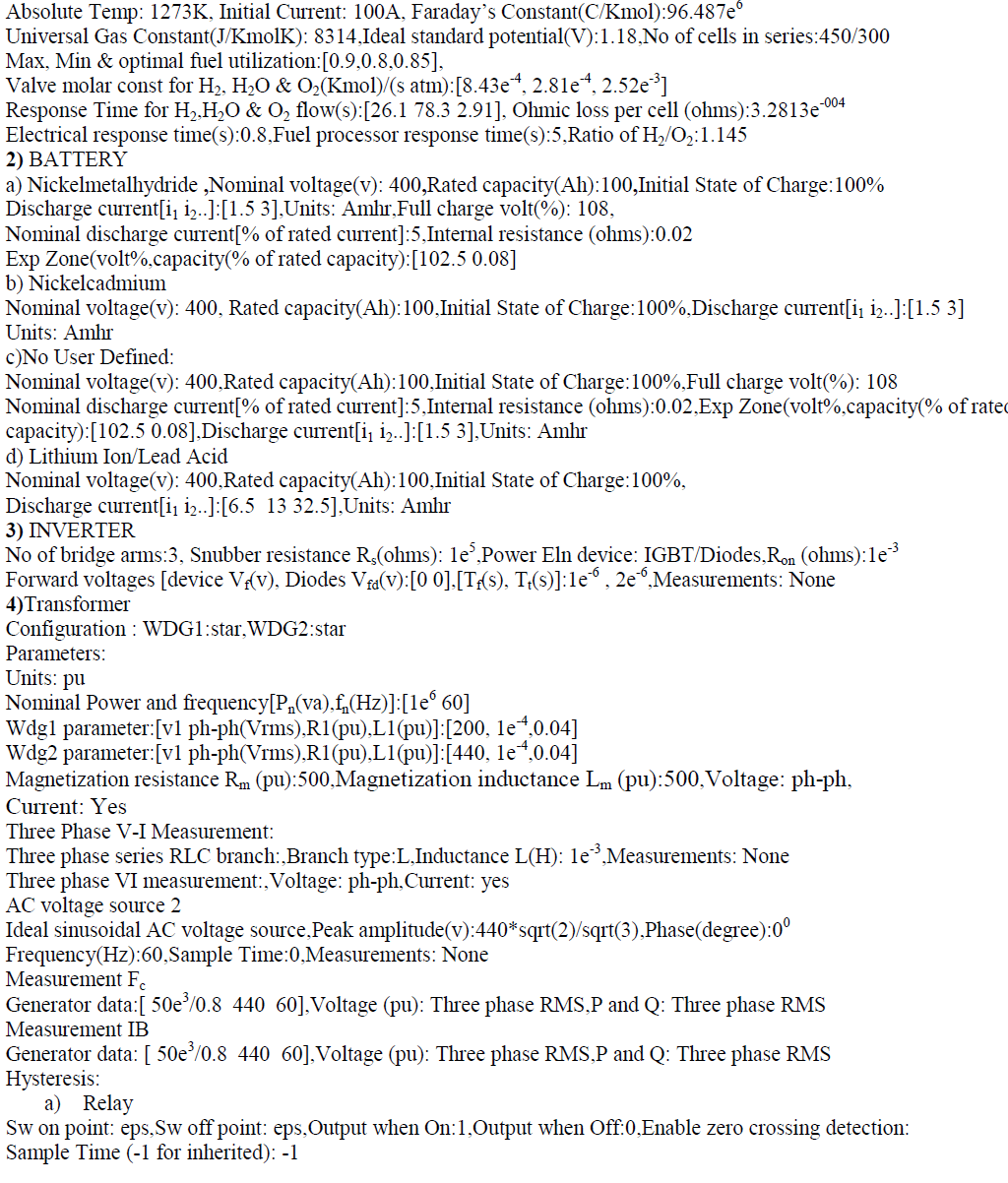 |
 |
IV. RESULTS AND DISCUSSION |
| Waveforms of Simulation: |
| A) SOFC 3000hrs |
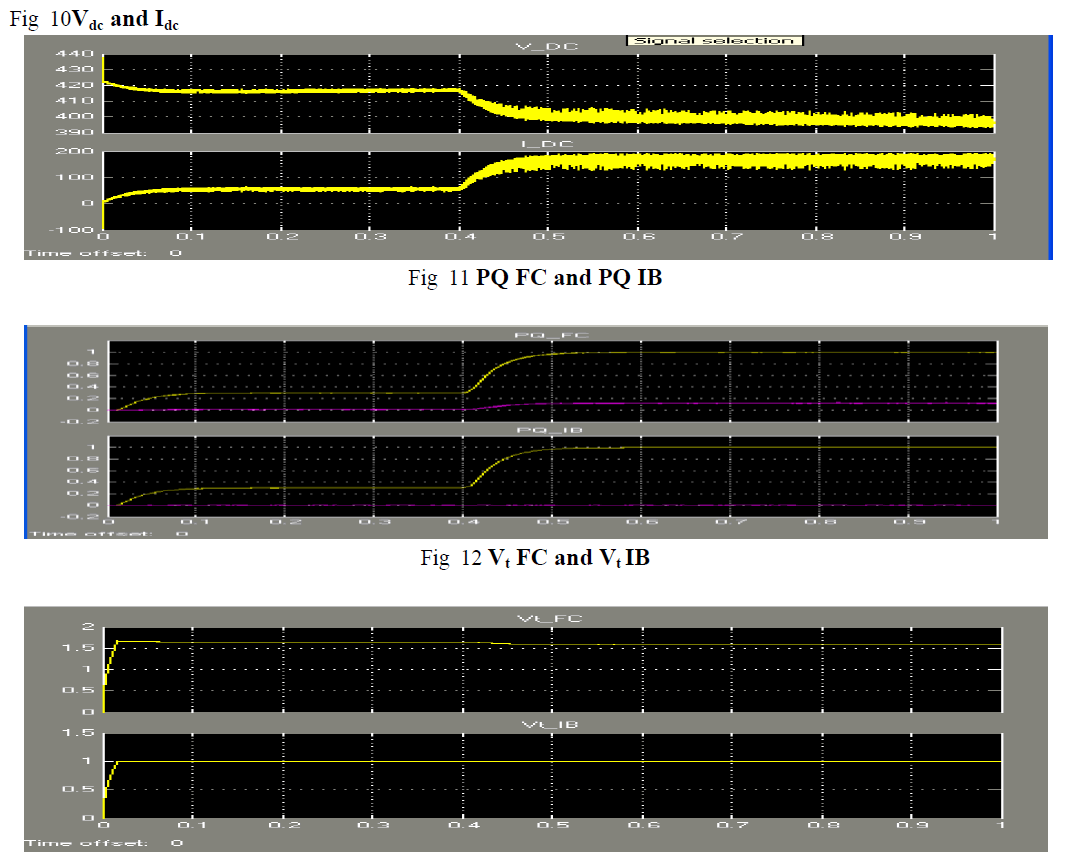 |
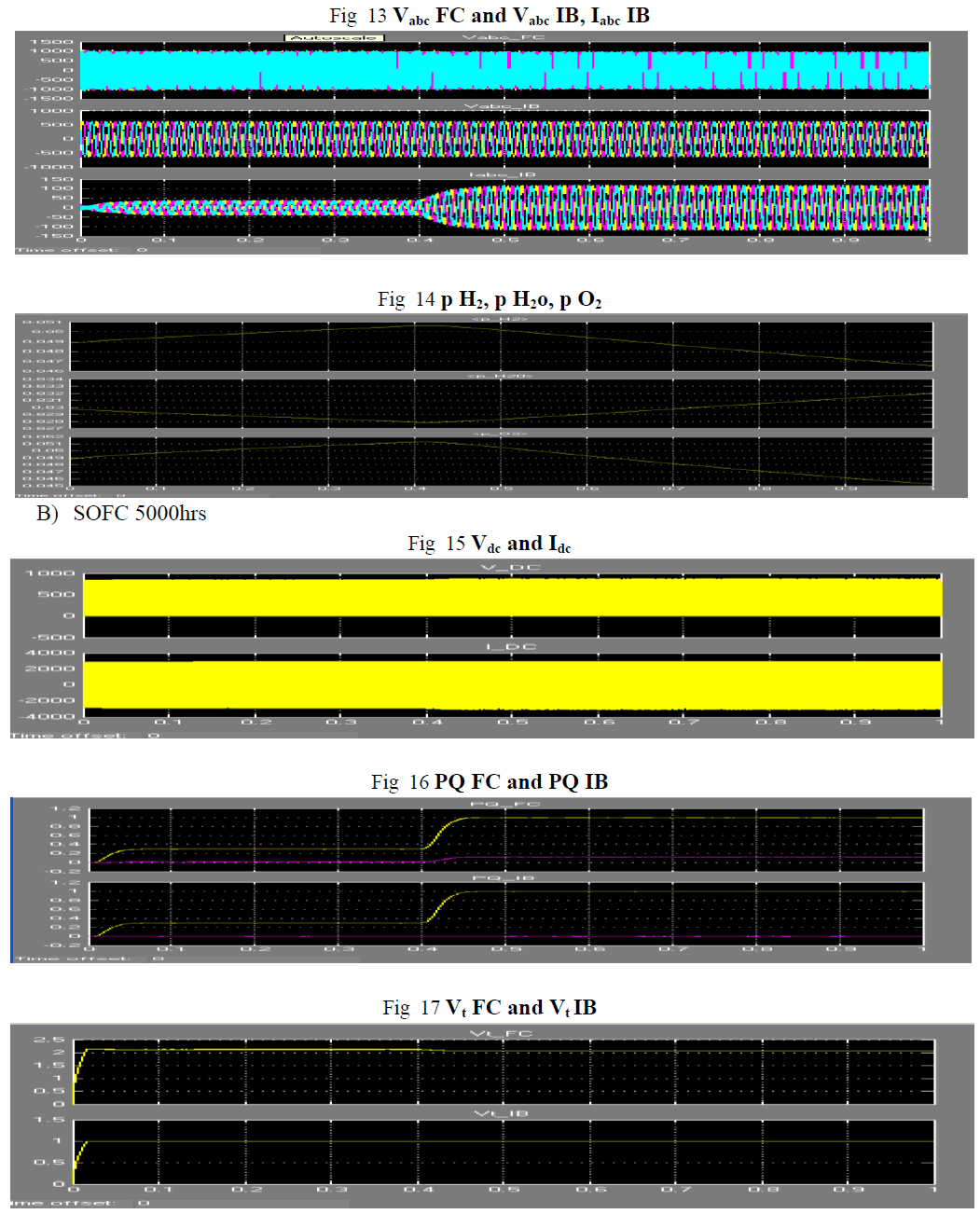 |
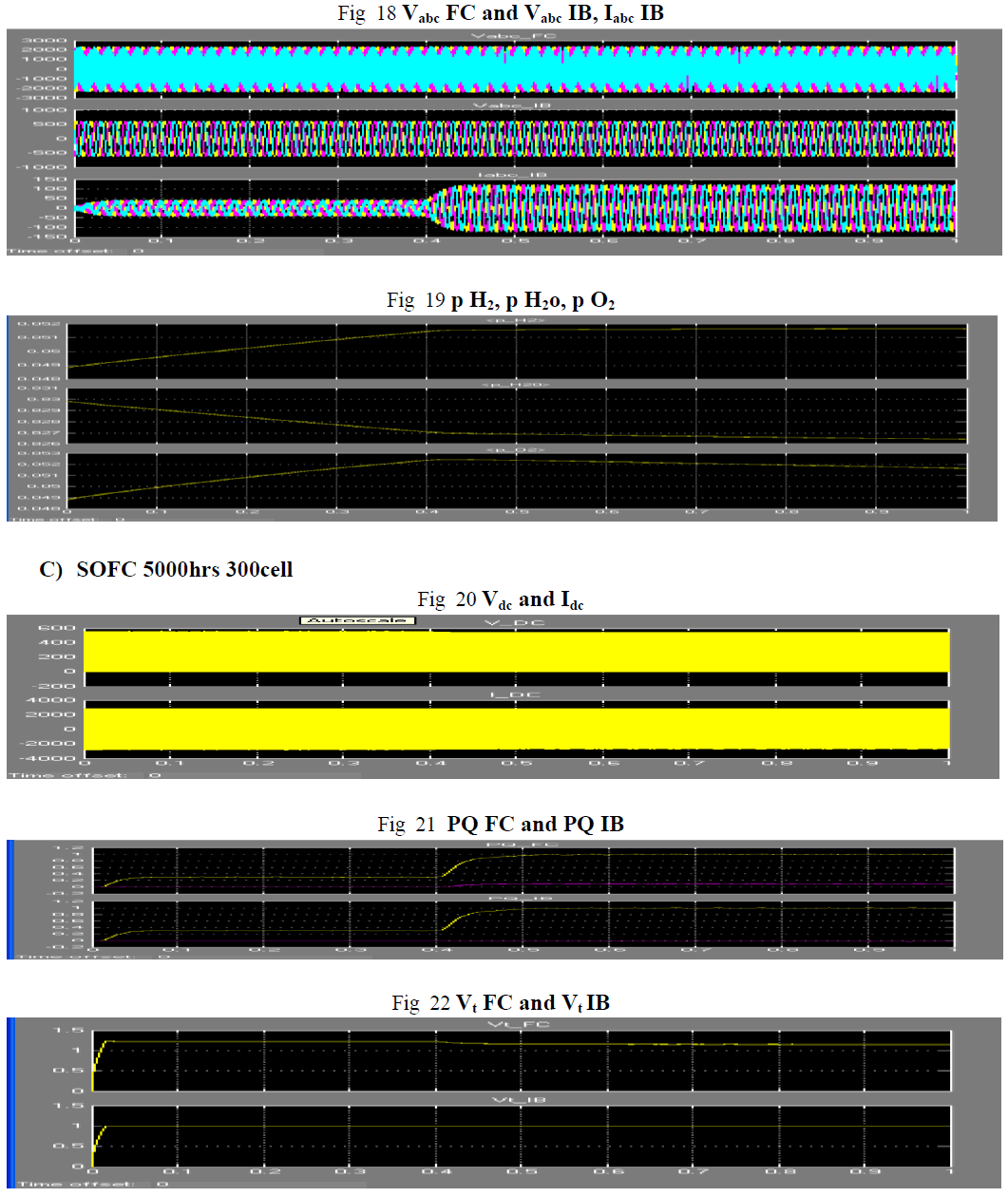 |
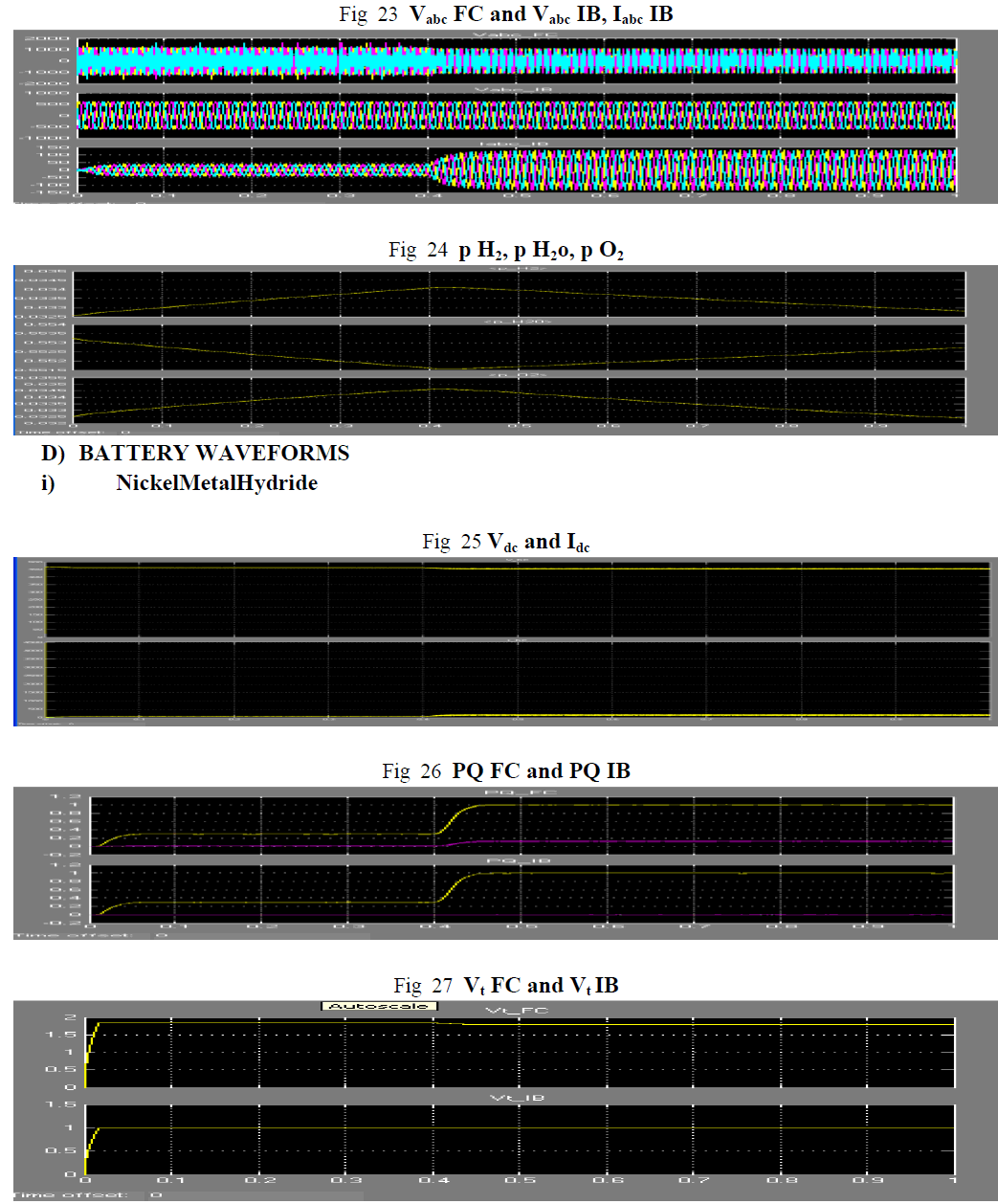 |
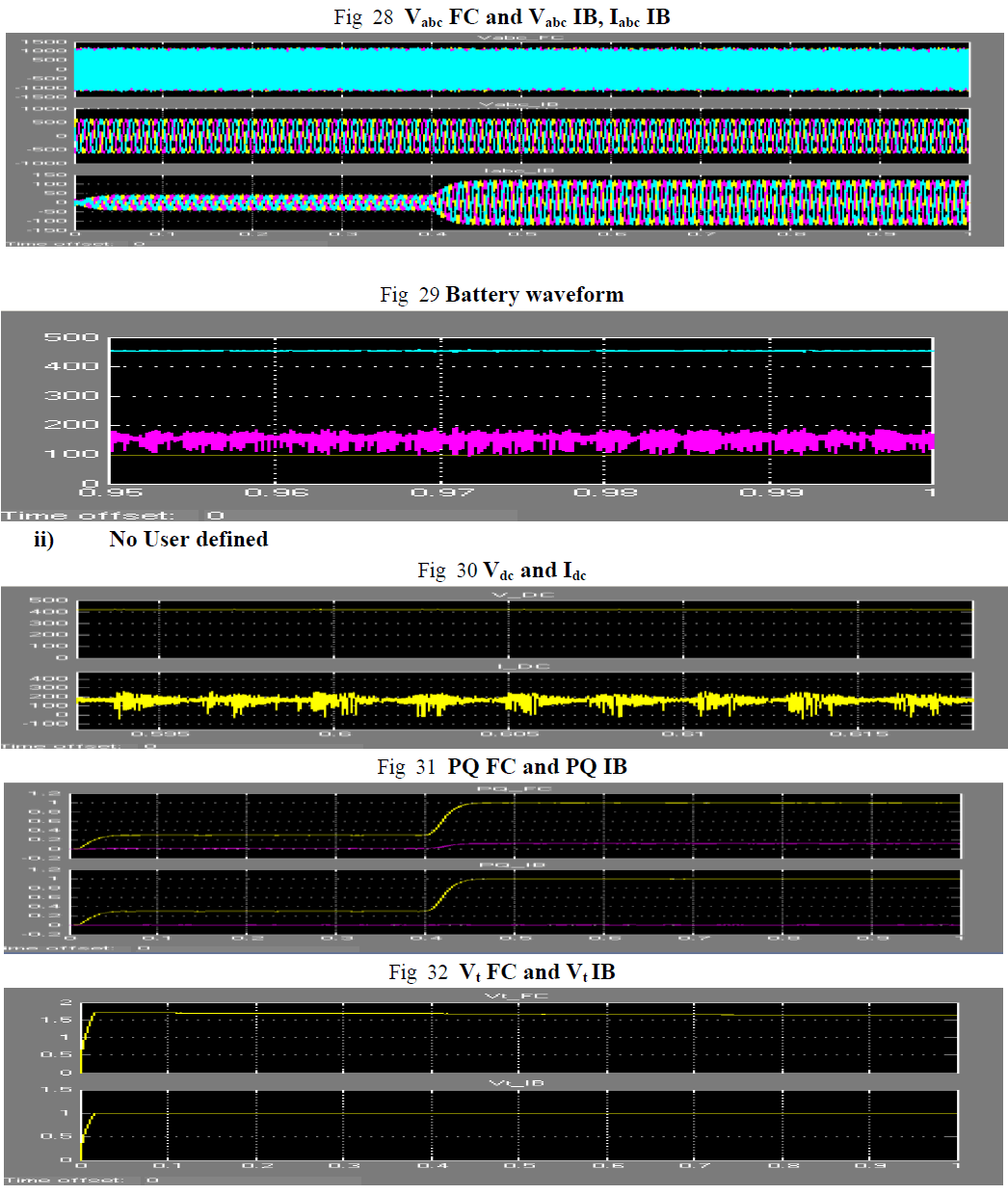 |
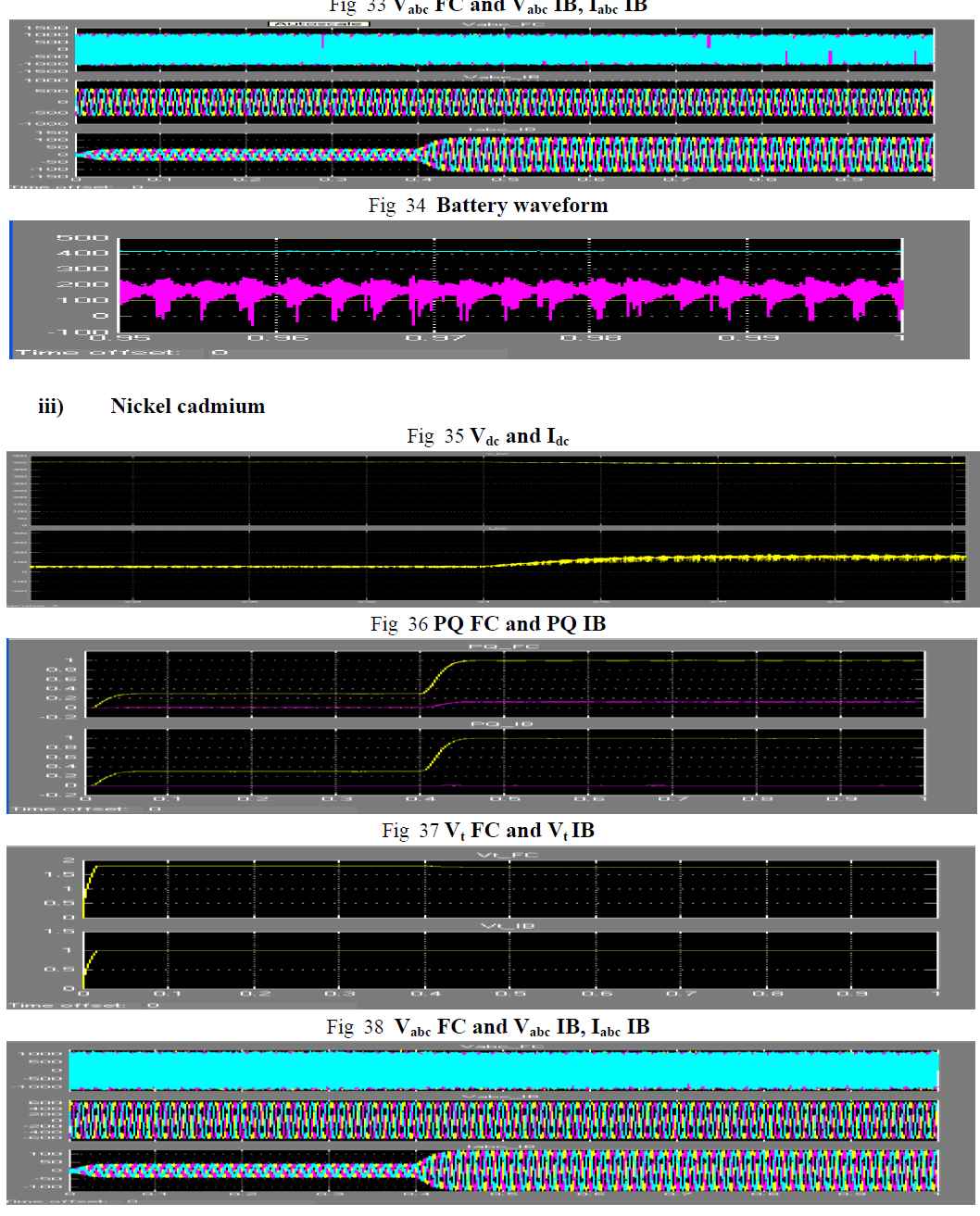 |
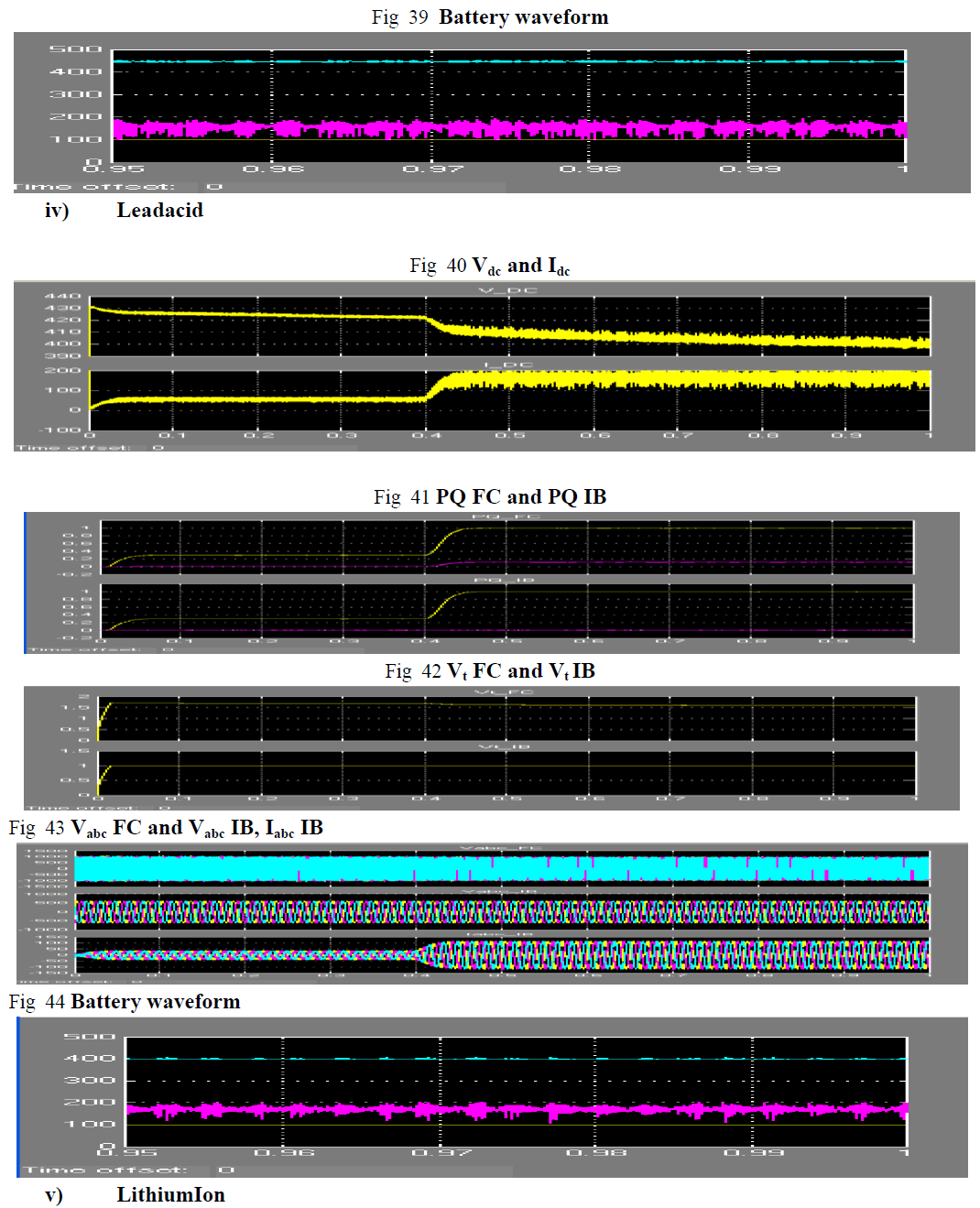 |
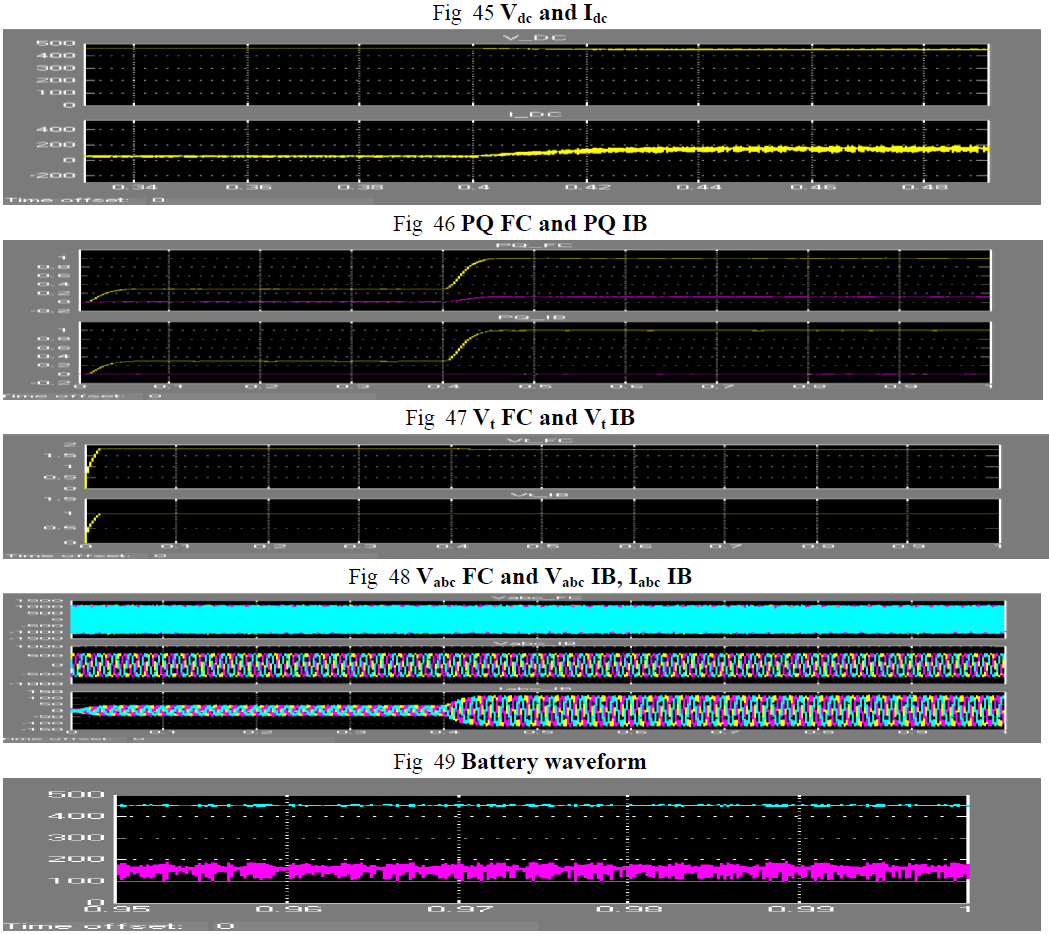 |
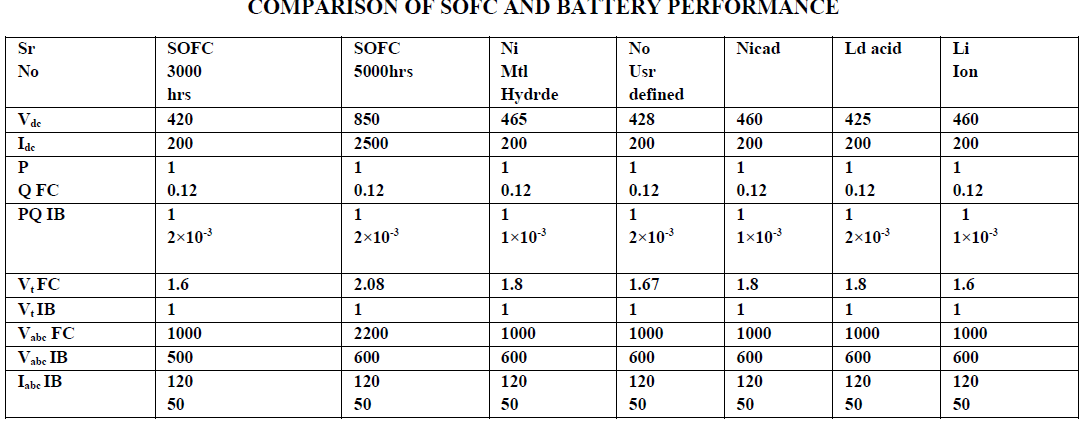 |
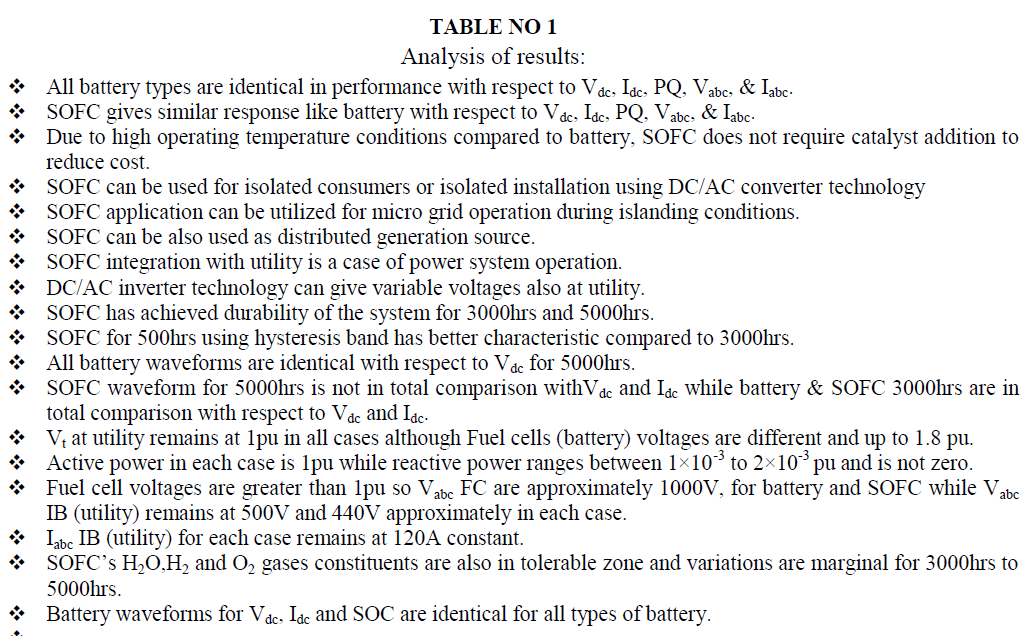 |
V. CONCLUSION |
| Interfacing of SOFC with utility (infinite bus) is obtained with simulation in MAT LAB 7.SOFC is a power source supplying utility for 3000hrs autonomy. SOFC has replaced battery technology in fuel cell market approach. Interface between SOFC and utility was based on power electronics DC/AC conversion technology. Simulation results Vdc, Idc, PQ, Vabc, & Iabc suggest application of SOFC interface with utility for isolated consumer or isolated installation. SOFC interface with infinite bus can be distributed generation application and also be utilized for micro grid operation under islanding condition. Thus proposed work has established and developed SOFC interface with utility for application as power plant, distributed generation and micro grid islanding operation technology. |
ACKNOWLEDGEMENT |
| The facility of simulation based Mat Lab 7 software at Electrical Engineering department of Faculty of Technology and engineering has made this work developed for technological application oriented. |
References |
|